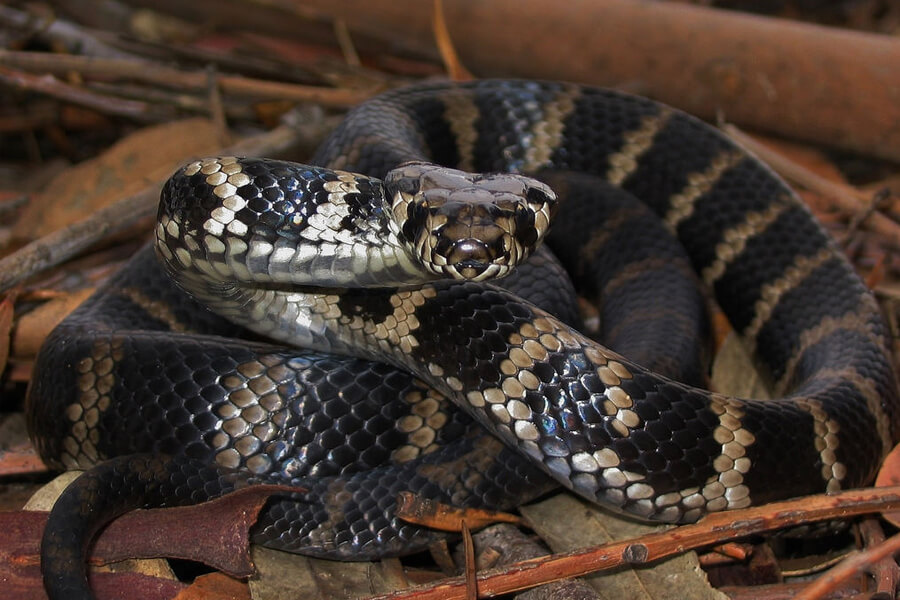Introduction
The tiger serpent is just one of Australia's the majority of well-known reptiles, been afraid for https://edgareicd270.bravesites.com/entries/general/Comprehending-the-Tiger-Snake-Habitat--Poison--and-First-Aid-Fundamentals its powerful poison and aggressive personality. This remarkable animal plays a crucial duty in the ecological community, yet it commonly encounters misunderstandings that cause unnecessary anxiety. In this thorough article, we will delve into the world of the tiger snake, discovering its environment, venom features, and necessary first aid techniques in case of a serpent bite.
Understanding the Tiger Serpent: Habitat, Poison, and Emergency Treatment Essentials
Tiger serpents are mainly discovered along the southerly shoreline of Australia, including Tasmania. They prosper in various atmospheres such as wetlands, coastal regions, and even metropolitan areas. Their flexibility makes them successful killers; nonetheless, their distance to human habitats often causes experiences that can result in bites.
This write-up intends to debunk tiger snakes by reviewing their habitat choices, First aid protocol examining their poison composition and impacts on people, and offering vital emergency treatment information for bites.
1. Tiger Snake Environment: Where Do They Live?
1.1 Summary of Tiger Snake Distribution
Tiger serpents (Notechis scutatus) are largely found in southern Australia and Tasmania. They inhabit different communities ranging from seaside marshes to freshwater lakes.

- Coastal Areas: Tiger serpents are typically seen near coastlines where they quest for fish and amphibians. Wetlands: These locations supply enough concealing places and plentiful prey. Urban Locations: As cities broaden into all-natural habitats, tiger snakes might be seen venturing into suburban yards or parks.
1.2 Preferred Environments of Tiger Snakes
Tiger serpents choose moist environments where water resources are easily available. Their habitats typically include:
- Marshes: The thick greenery allows them to ambush victim effectively. Swamps: These areas use shelter from killers while giving an abundant hunting ground. Riversides: Water bodies draw in several pets which act as food resources for these snakes.
1.3 Environmental Aspects Affecting Habitat Choice
Several elements affect where tiger snakes select to reside:
- Temperature: Being ectothermic (cold-blooded), they need warm settings for optimum task levels. Prey Accessibility: High populaces of frogs and tiny creatures attract these snakes. Shelter: Dense greenery serves not just as camouflage however likewise as security against prospective threats.
2. Are Tiger Snakes Venomous? Comprehending Their Venom
2.1 Make-up of Tiger Snake Venom
Yes! Tiger serpents are without a doubt venomous animals. Their venom is an intricate mix consisting of neurotoxins that can cause paralysis and coagulopathies affecting blood clotting mechanisms.
Key Components of Venom:
- Neurotoxins: Influence nerve function bring about paralysis. Hemotoxins: Damage blood vessels causing interior bleeding.
Understanding these elements aids us value the potency of a tiger snake bite.
2.2 Impacts of a Tiger Snake Attack on Humans
A bite from a tiger snake can lead to serious signs:
- Local Signs: Discomfort, swelling, and discoloration at the bite site. Systemic Symptoms: Nausea, throwing up, trouble breathing as a result of paralysis or constraint of airways.
Severity Levels
Minor Bite: Localized discomfort without systemic symptoms. Moderate Bite: Systemic signs yet manageable with medical care. Severe Bite: Deadly; requires immediate clinical intervention.3. Recognizing Various Kinds Of Tiger Snakes
3.1 Eastern vs Tasmanian Tiger Snakes
There are two main groups based upon geographic circulation:
Eastern Tiger Snake (Notechis scutatus)
Found along eastern coastlines approximately Queensland.
Tasmanian Tiger Serpent (Notechis scutatus)
Adapted particularly to Tasmania's unique setting with somewhat differing coloration patterns.
3.2 Shade Variants in Environment Preferences
Tiger serpents display significant shade variants depending upon their environment:
- Coastal populaces usually present stripes or blotches for better camouflage against sandy shores.
4. Behavior Patterns of Tiger Snakes
4.1 Aggressiveness Level
Tiger serpents are known for their hostile behavior when intimidated or caught which can lead to protective strikes if provoked.

4.2 Hunting Techniques
They have remarkable agility permitting them to strike quickly at prey such as frogs or small rats mostly throughout twilight hours when they're most active-- making them nocturnal hunters!
5. Emergency Treatment for Snake Bites: Essential Actions You Should Know
When it concerns taking care of serpent bites, understanding is vital!
5.1 Immediate Actions After a Bite
If bitten by a tiger serpent:
Stay calmness! Panic boosts heart rate which spreads out venom quicker via your bloodstream.
Apply pressure around the injury utilizing tidy cloths-- stay clear of cutting or drawing out venom!
Remove limited clothing/jewelry near the bite website; swelling might occur rapidly.

Immobilize the influenced limb using splints when possible-- this limits motion helping slow down poison spread!
5.2 Getting Clinical Help
Seek emergency medical help right away! Time is essential when taking care of prospective envenomation from tiger serpents!
5.3 Emergency treatment Package Fundamentals for Serpent Bites
Having a well-equipped first aid set can make all the difference during Article source emergency situations:
|Thing|Description|| ------|-------------|| Stress Bandage|Aids immobilize injury|| Sterilized Gauze|For dressing injuries|| Emergency Situation Contact Information|Quick access numbers|| Antivenom Information|Knowledge concerning local antivenoms|
6 Frequently asked questions About Tiger Snakes
Q1: Are all tiger snakes dangerous?
A: While all have venomous capabilities impacting human beings significantly-- most favor avoidance unless threatened!
Q2: Exactly how swiftly does tiger snake venom impact humans?
A: Signs may manifest within mins depending upon area & & quantity infused during envenomation events!
Q3: Can you endure a tiger snake bite without treatment?
A: Neglected attacks can be fatal due to fast development; immediate medical care is crucial!
Q4: What must I do if I experience one?
A: Keep distance & & pull back gradually; avoid unexpected motions that may provoke aggression!
Q5: How usual are attacks from tiger snakes?
A: Although experiences happen often-- real attacks stay fairly unusual due mostly due precautionary actions taken by citizens living within impacted ranges.
Q6: Exists a remedy available?
A: Yes! Antivenoms certain for Australian species exist-- medical facilities bring these medications prepared when needed urgently post-bite incidents!
7 Conclusion
Understanding the details surrounding "Understanding the Tiger Snake: Environment, Venom, and Emergency Treatment Essentials" is critical not only for individual safety and security however also fostering conjunction with these amazing creatures inhabiting Australia's landscape! By learning more regarding their behaviors & & efficient response techniques pertaining to potential experiences-- we equip ourselves better versus unnecessary concerns while appreciating nature's diversity totally! So let's embrace education and learning instead are afraid-- it leads in the direction of harmony in between humanity wildlife alike!